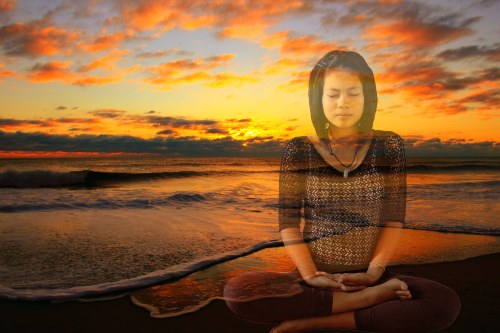
So what is Yin and Yang? YinYang Theory is a paradigm of oriental theory largely credited to the Taoist philosophical way of thinking. It is a wide spread theory that has permeated all of traditional Chinese and even Japanese philosophy. Eastern culture is very much veiled by imprecise logic and seeming contraindications making it complex and at times difficult to explain. However YinYang theory explains opposites, interdependence, mutual reliance, cyclic transformation, interconnectedness and the dynamic nature of life around and within each of us.
When we refer to yoga as having Yin or Yang qualities we often refer to how different practices are opposite and how we as the individual participant interact with the practice. There are never any absolutes in yoga and what one person feels in a yoga posture is not necessarily the same as another person. In fact it may not even be the same from day to day. Every yoga practice is independent on that moment it is practiced in. This is what makes yoga so unique from any sports, recreational activity or even some forms of martial arts. There is no strategic method of getting to a particular point, there is no game plan, there is no move that renders the competition defenceless; it is an art that is practiced in that specific moment. According to Paul Grilley, Yin Yoga teacher even experienced Yogi’s can find that intuitive and subjective place where aesthetics no longer hold space and the practitioner can enter into the realms of the emotional and energetic body at that moment in time.
Anyway back to what makes yin yoga unique from other forms of yoga. The majority of the poses are done seated on the floor although some can be done standing. I look forward to exploring some of the poses in a chair for some of the students who attend regular classes and find sitting on the floor a challenge.
The poses in Yin Yoga can be deep and are held for long period of time. By holding the poses for longer the body is given great time to create fluidity and flow in the connective tissue. With the lifestyle most of us westerners live we tend to be more sedentary, hunched over computers or devices holding our bodies in positions which result in reduced circulation of the blood, a seizing up of muscles, joints and tissues, stiffness of the body and pain. Holding our bodies in one position for too long causes our Fascia (connective tissue) to bind or become like “glue” making movement difficult and painful. Fascia does have a positive role to play in the body but more on that subject in another article.
In tradition Chinese medicine terms practicing Yin Yoga strengthens our Ki (Qi / Chi) and maintains the flow of energy through the body’s meridian system. In yoga we recognise Ki as Prana – our life force. When the meridians do not have adequate Ki flow or life force moving through them, various imbalances and disease can be experienced to both mind and body. Therefore having a regular Yin Yoga practice compliments those of us with Yang lifestyles very well. Yin Yoga is also an ideal complement to anyone who regularly practices a strong “yang” yoga style.
It is the way that Yin Yoga works so well with the alternative therapies of Shiatsu and Oriental medicine that I think makes it so unique from the other forms of yoga I practice. I am able to delve into the philosophical theory of Yin Yoga and interweave the theory of the five elements, concepts of nature and meditative stillness into my own practice and the classes that I teach. Since I am more Yang in nature I find this sense of stillness in the mind and the body difficult to grasp so for me I am able to explore the slow softening of my body using the yin yoga poses while interweaving a story around the meridians I am focusing on given the time of the year, the season and what is happening in nature.
If you are interested in exploring this unique form of yoga I host regular classes in Petrie and North Lakes. Feel free to connect with me and register when you feel the call to join us in this deep, meditative and opening practice.


 RSS Feed
RSS Feed